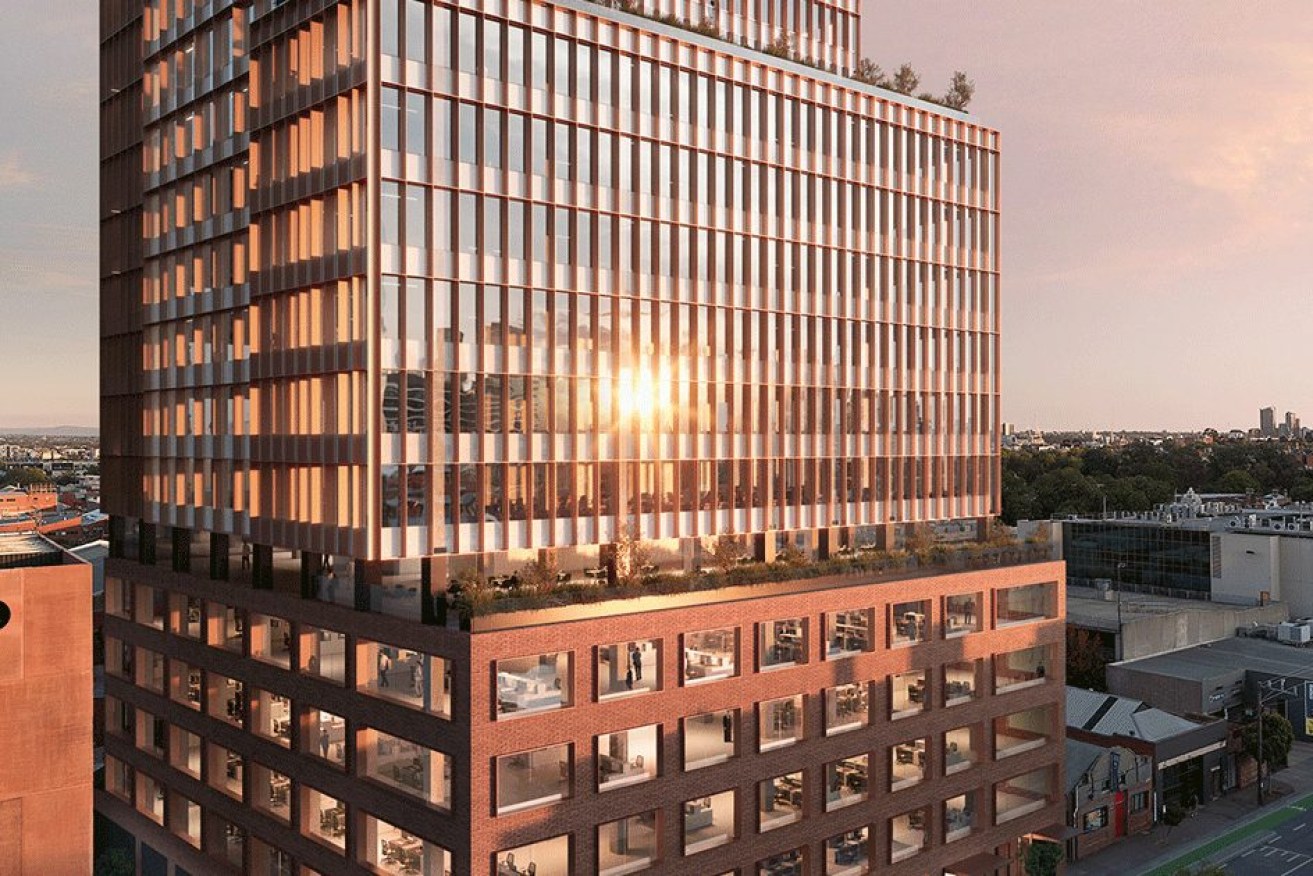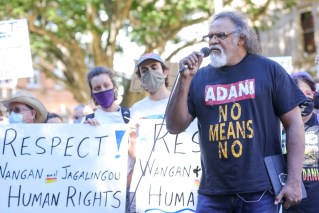Wooden it be nice: Push for timber office towers to boost worker health
High-rise offices made of wood instead of steel and cement are coming to city skylines, and could boost worker productivity and mental health.

An artists impression of the T3 Collingwood building. (Supplied image)
A wooden high-rise to be built in Melbourne is the first project financed by Australia’s green bank under a new federal program.
Timber is the “next frontier” for the property industry and can change the way Australia thinks about commercial scale buildings, according to Clean Energy Finance Corporation CEO Ian Learmonth.
The green bank has committed up to $70 million in debt finance for the T3 Collingwood development under the new $300 million timber building program.
Mass timber construction in Australia has the potential to substantially reduce so-called “embodied carbon” in buildings and cut carbon emissions in Australia’s $65 billion construction sector.
The T3 (timber, transit and technology) construction method to be used by Hines Australia replaces traditional concrete and steel with prefabricated solid wood systems that aim to be strong, fast and sustainable to build – as well as pleasant to work in.
Learmonth said this project should encourage owners, developers, architects, engineers and builders to use mass timber as an alternative to conventional construction materials.
The alternative can cut up to 75 per cent of embodied carbon emissions compared with conventional designs that rely on emissions-intensive steel, aluminium and cement, CEFC research shows.
The 15-storey office tower in inner-suburban Collingwood is designed to slash embodied carbon levels by as much as 40 per cent during the construction phase and will aim for net zero emissions when occupied.
The hybrid construction will have a glue-laminated timber structure with cross-laminated timber flooring on top of five reinforced concrete podium levels.
T3 Collingwood will use about 4000 cubic metres of wood for the structural frame, fixing in place about 3000 tons of carbon.
The timber will be sustainably sourced from two specialist Victorian mass timber manufacturers, XLam Australia and Australian Sustainable Hardwoods.
Hines Australia managing director Simon Nasa said the method creates people-friendly environments that result in increased productivity and better mental health.
“Not only is timber a completely renewable resource, but timber offices are also biophilic in creating a more natural working environment for tenants and their staff,” he said.
Biophilic design aims to connect building occupants to the natural environment, through the choice of materials, plantings, and how spaces and natural light work together for people.
The landmark Melbourne project by specialist global group Hines has attracted finance from one of Australia’s leading institutional non-bank lenders in the real estate market, the Madigan Active Debt Fund.
Madigan Capital founder and CEO Michael Wood said the use of environmentally sustainable construction techniques strongly aligns with their investment strategy.
“We believe we have a responsibility to invest in projects that are working towards using sustainably sourced construction methods and materials to reduce operational and embodied carbon,” he said.
The green bank’s joint head of property Ryan Rathborne said the T3 Collingwood was also a vote of confidence in a new sustainable timber industry – building domestic industries and supply chains.












